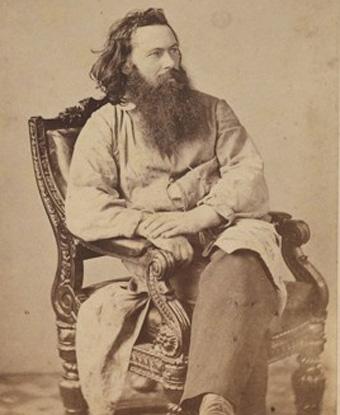Last updated: June 17, 2015
Person
Alexander Gardner

Library of Congress
From the Peninsula to Maryland: Gardner's role in the summer of 1862
When war threatened the nation in the spring of 1861, thousands of soldiers flocked to Washington, D.C., to defend the capital. Photographers followed in their footsteps capturing camp scenes and portraits of untested, jubilant greenhorns in their new uniforms. It so happened that Alexander Gardner had just opened a new studio in the capital for the most notable photographer of his era - Mathew Brady. Gardner also took advantage of the coming storm to increase his business. All of the early war photographs were taken in studios or tents. No one had produced images in the field.
It wasn't until September of 1862 that the first true images of war were produced. Antietam was the first battle to depict the grim and bloody truth of civil war through the lens of photographer Alexander Gardner and his assistant James Gibson. Gardner made two trips to Antietam. The first was just two days after the battle, the second, two weeks later when President Abraham Lincoln visited the battlefield.
During both of his trips, Gardner moved across the battlefield taking advantage of another new photographic technique that increased the impact of war images, the stereograph. A stereograph image uses two lenses capture two simultaneous photographs, and when seen through a viewer, the mind creates a three-dimensional image. Parlors soon filled with viewers and the cards to fill them as stereo views became the rage in America. Of the approximately ninety images Gardner took at Antietam, about seventy were in stereo, adding a new, horrific view of the American landscape.
Newspapers could not reproduce photographs, but woodcuts from the Antietam images spread across the country. Gardner's original images were put on display in New York City at Brady's gallery. New Yorkers were shocked and appalled. The New York Times stated that Brady was able to "bring home to us the terrible reality and earnestness of war. If he has not brought bodies and laid them in our door-yards and along streets, he has done something very like it..."
